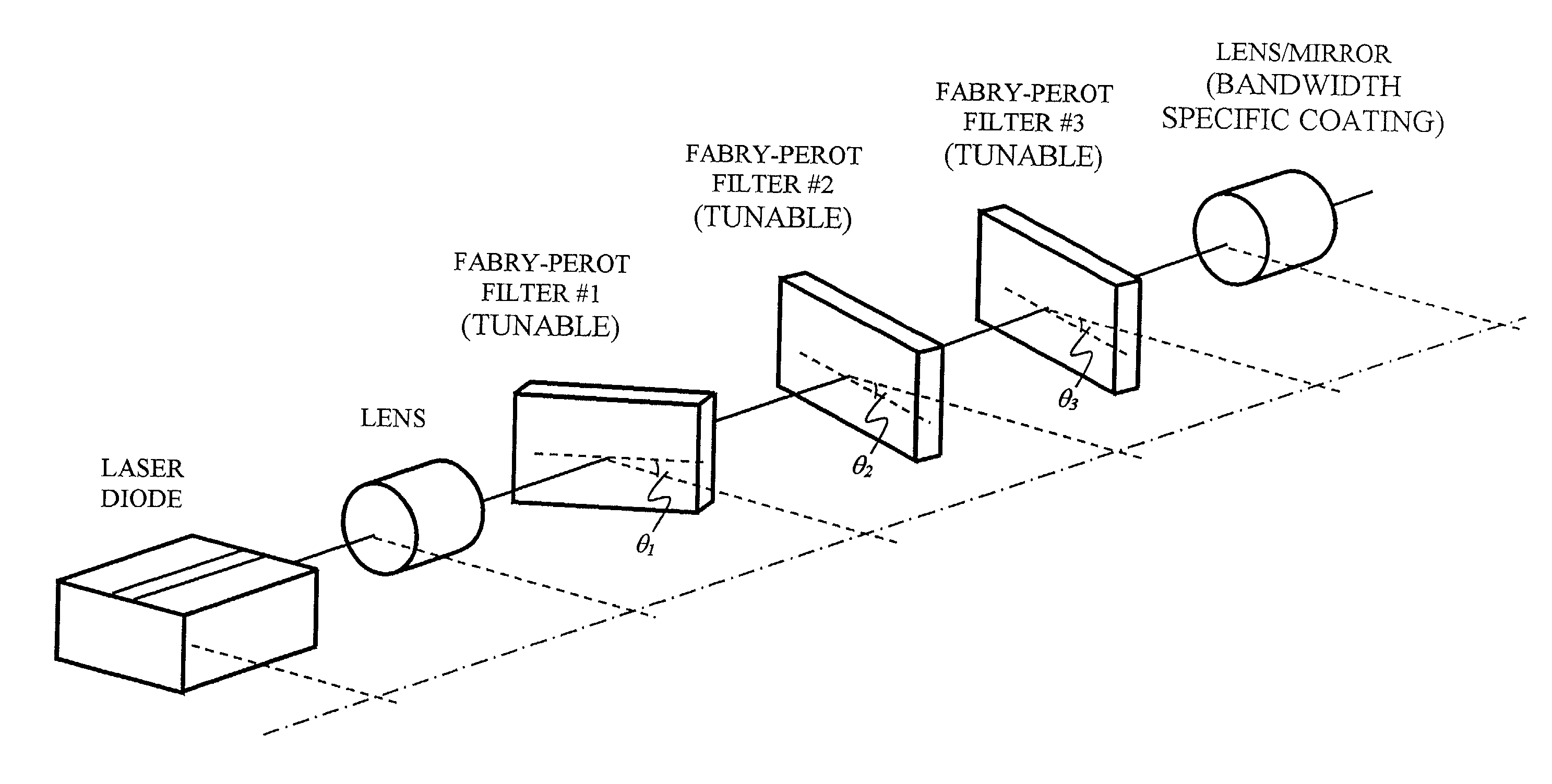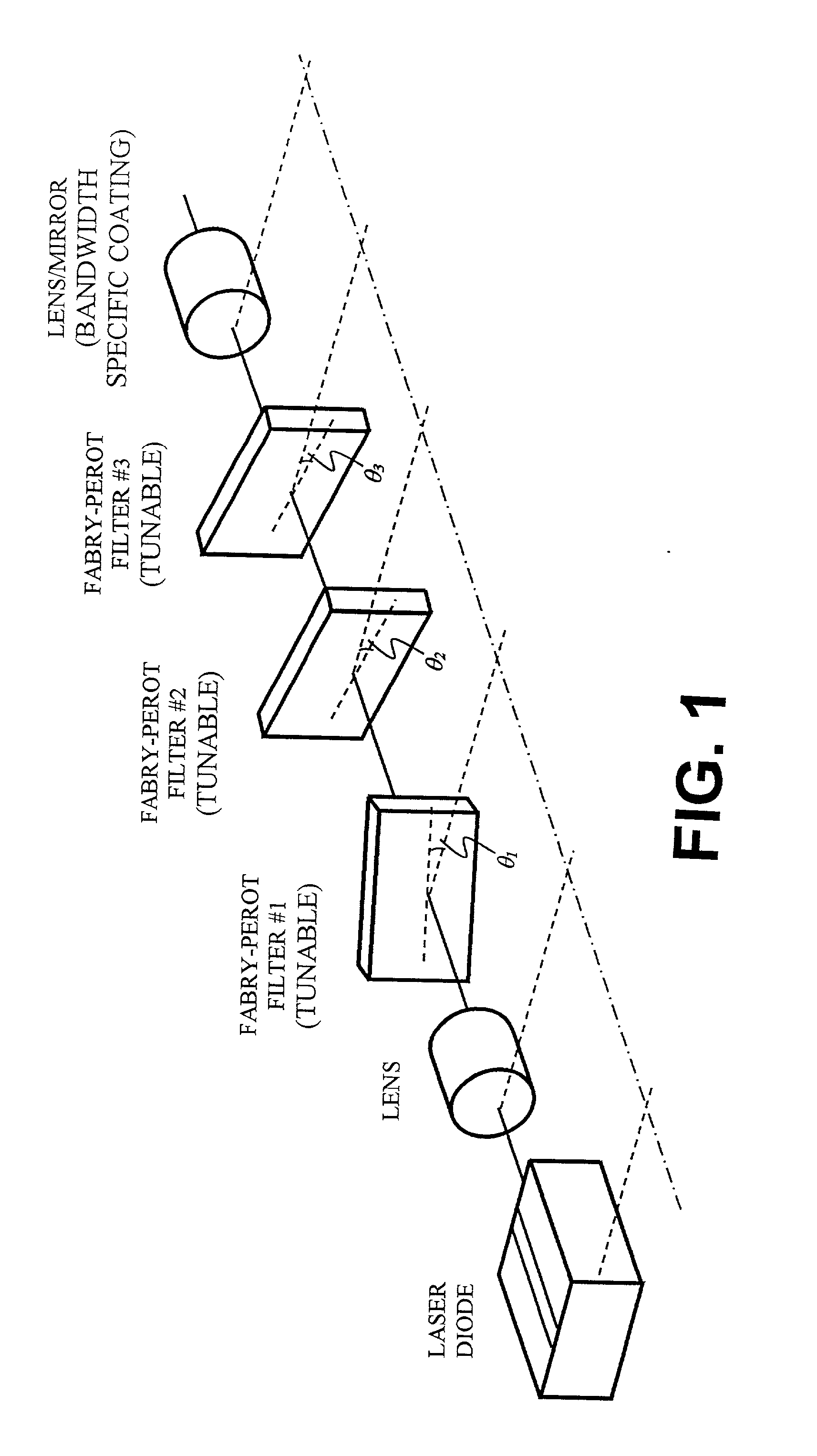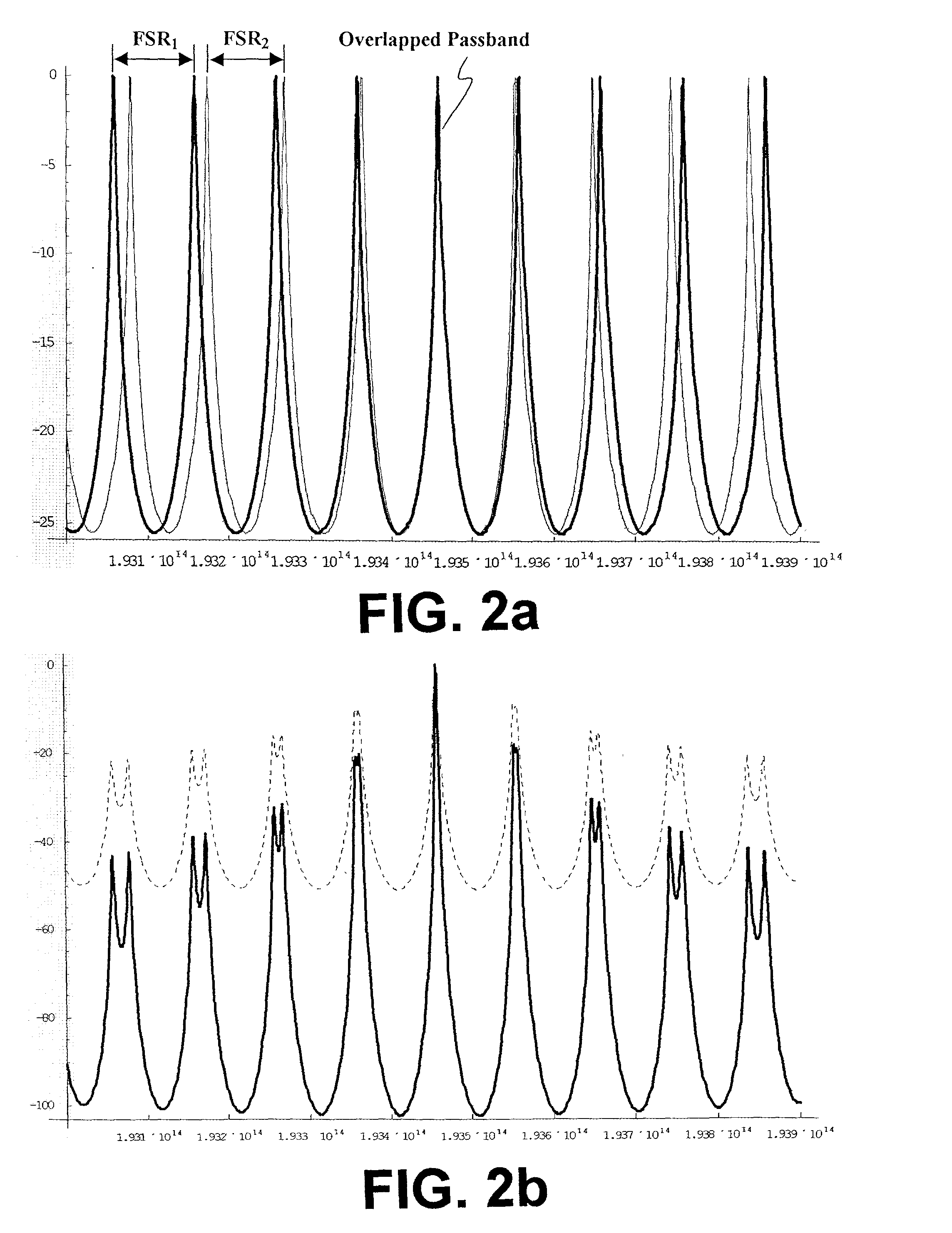Wavelength discretely tunable semiconductor laser
- Summary
- Abstract
- Description
- Claims
- Application Information
AI Technical Summary
Benefits of technology
Problems solved by technology
Method used
Image
Examples
second embodiment
[0042] FIG. 6 shows the tuning element which retains the above discussed features while permitting translational tuning by employing a wedge shape filter in the cascade filter combination. In this embodiment, Fabry-Perot etalon filter No. 2 is replaced by a wedge filter. The filter optical path change and thus the transmission passband shift are achieved by translating the wedge filter in a direction perpendicular to the optical axis. When the wedge filter is translated, the intersection of optical axis with the wedge filter is altered. Thus the optical path in the filter is changed.
[0043] FIG. 7 shows a third embodiment of the inventive tuning structure. In this embodiment, one the two Fabry-Perot filters is replaced by a polarization interference filter. The polarization interference filter consists of an electro-optically-tunable birefringent waveplate, a fixed birefringent waveplate, the laser cavity, and the T.E. polarization light emitted from the laser diode. The slow and fas...
fourth embodiment
[0044] FIG. 8 shows the invention. In this embodiment the laser and wavelength tuning structure are integrated on a semiconductor substrate by epitaxy process while retaining all of the features of the previous embodiments. The facet of the filter is formed by dry or wet etch of the material. The high resolution is enhanced by increasing the Q factor of the section with current injection. The refractive index change, thus the optical path change, is generated by either the voltage or current-dependent electro-refractive effects (linear and non-linear) in semiconductor materials. At one end of the laser, a semiconductor optical amplifier is incorporated to provide amplification to the selected lasing wavelength mode. The control of the tuning is externally determined by electrical circuits which simultaneously balance the cascade filters and cavity length.
PUM
 Login to View More
Login to View More Abstract
Description
Claims
Application Information
 Login to View More
Login to View More - R&D
- Intellectual Property
- Life Sciences
- Materials
- Tech Scout
- Unparalleled Data Quality
- Higher Quality Content
- 60% Fewer Hallucinations
Browse by: Latest US Patents, China's latest patents, Technical Efficacy Thesaurus, Application Domain, Technology Topic, Popular Technical Reports.
© 2025 PatSnap. All rights reserved.Legal|Privacy policy|Modern Slavery Act Transparency Statement|Sitemap|About US| Contact US: help@patsnap.com



